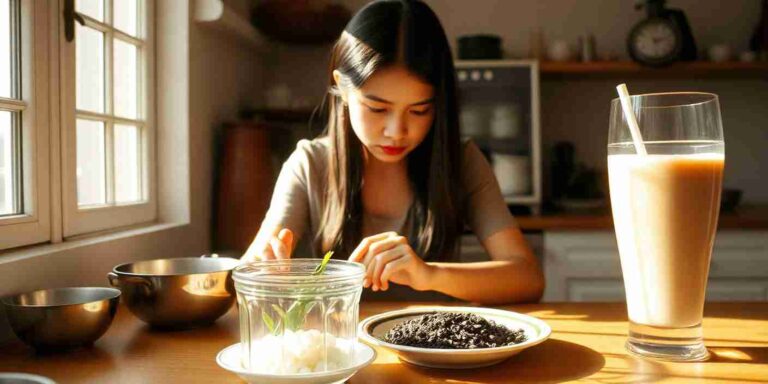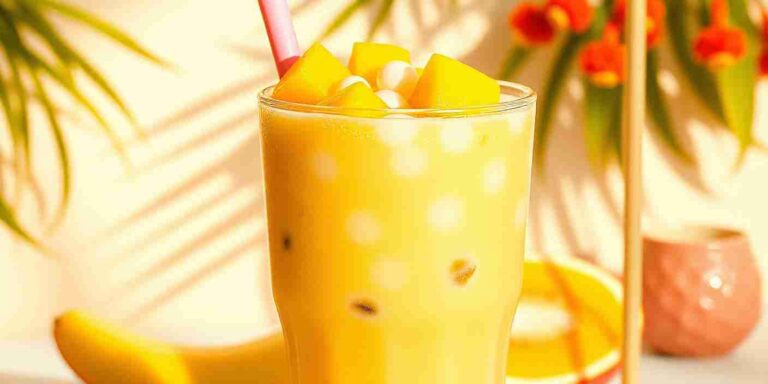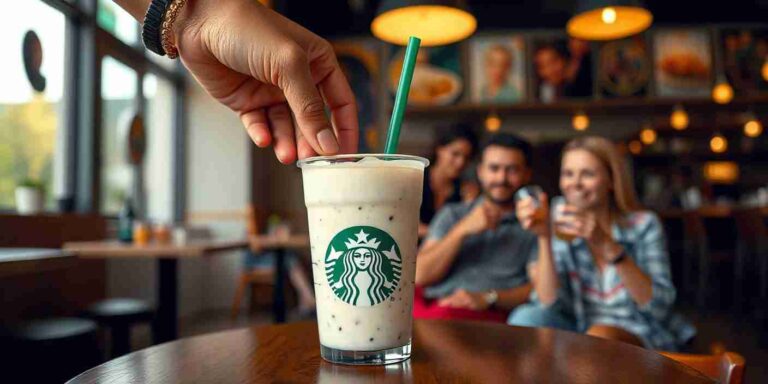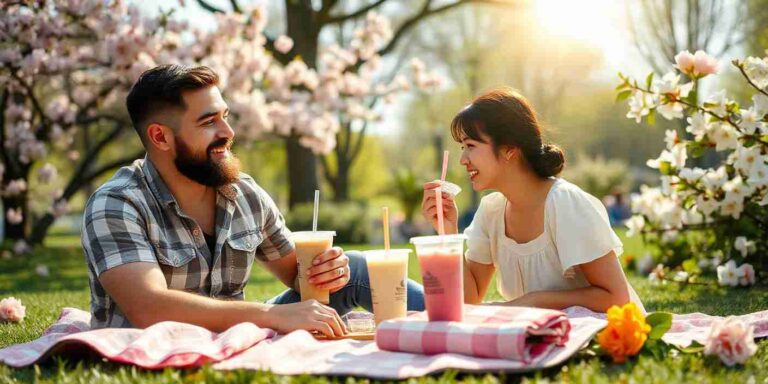Is Bubble Tea the Same as Boba? Expert Insights!
Yes, bubble tea and boba are essentially the same thing. The terms often get used interchangeably, but it’s worth diving into what each one means. Bubble tea originated in Taiwan and features a delightful mix of tea, milk, and chewy tapioca pearls—often referred to as “boba.”
Key Takeaways
- Terminology: Bubble tea and boba are often used interchangeably, but bubble tea refers to the drink itself, while boba specifically denotes the chewy tapioca pearls.
- Ingredients: Bubble tea typically consists of brewed tea, milk, sugar, and toppings like boba or fruit jellies. Boba highlights just the tapioca pearls that add texture to the drink.
- Texture & Flavor: The combination of cold flavored tea and chewy boba creates a unique drinking experience, distinguishing bubble tea from other beverages.
- Cultural Importance: Bubble tea holds cultural significance in the Asian-American community as a symbol of tradition and social connection.
- Origins: This popular drink originated in Taiwan during the 1980s and has evolved into various regional adaptations across different countries.
Understanding Bubble Tea And Boba
Bubble tea and boba are often thought to be the same drink, but they have specific meanings. Knowing the differences helps you appreciate this popular beverage even more.
Definition Of Bubble Tea
Bubble tea, also known as boba tea, is a cold, flavored tea drink that originated in Taiwan. This refreshing beverage typically contains a base of brewed tea mixed with milk or flavorings.
The standout feature is the addition of chewy tapioca pearls, which provide texture and fun while drinking. Different toppings like fruit jellies or popping boba can also enhance your experience.
Definition Of Boba
Boba refers specifically to the tapioca pearls found in bubble tea. These balls are soft and chewy, made from tapioca starch, which comes from cassava roots.
While boba primarily means these pearls, it sometimes describes bubble tea itself in casual conversations.
In addition to tapioca starch, some boba may contain sweeteners such as sugar or caramel for added flavor.
Understanding these definitions clarifies why people use each term differently while enjoying their favorite drinks.
Key Differences Between Bubble Tea And Boba
Bubble tea and boba are often seen as the same drink, but some key differences exist. Understanding these distinctions helps clarify what each term refers to.
Ingredients
Bubble tea typically contains tea, milk, sugar, and chewy tapioca pearls (boba). Other popular toppings include jelly, pudding, or red beans. The combination of these ingredients creates a delicious flavor profile that varies by personal preference.
Boba refers mainly to the chewy tapioca balls added to the drink. While both terms describe similar drinks, bubble tea emphasizes the overall beverage, while boba focuses on the texture provided by its signature ingredient.
Texture And Flavor
Bubble tea features a cold, sweetened tea base mixed with milk and various fruit flavors. The inclusion of chewy tapioca pearls adds a fun element that enhances your drinking experience.
Boba, in this case, highlights the small and round tapioca pearls known for their slightly gummy texture. This texture contributes significantly to how you enjoy bubble tea, making it unique compared to other beverages.
Understanding these distinctions between bubble tea and boba clarifies their meanings in conversations about these popular drinks without losing sight of their similarity as well-loved beverages.
Cultural Significance
Bubble tea, known as boba tea, holds great cultural value, especially in the Asian-American community. This drink symbolizes tradition and identity, creating a sense of belonging among those with Asian roots.
It has moved beyond being just a drink to becoming a significant part of social gatherings and online groups.
Origins Of Bubble Tea
Bubble tea started in Taiwan during the 1980s. The drink combines sweet milk tea with chewy tapioca pearls. The term “bubble” comes from the frothy layer on top after shaking.
Later in that decade, large tapioca pearls were added, earning them the nickname “boba.” Today, bubble tea is celebrated for its unique flavors and textures.
- United States: In the US, especially on the West Coast, “boba” is commonly used to refer to both the drink and its tapioca pearls.
- Asia: Many Asian countries have their versions of bubble tea, often featuring unique ingredients like fruit or different types of milk.
- Europe: Bubble tea shops are gaining traction across Europe, introducing diverse flavors to local audiences.
This cultural significance shows how bubble tea and boba connect people through shared experiences and traditions while highlighting regional differences in popularity and preparation.
Conclusion
Understanding the relationship between bubble tea and boba enriches your appreciation for this beloved drink.
While they’re often used interchangeably, recognizing that bubble tea refers to the entire beverage and boba to the chewy pearls adds depth to your experience.
As you explore different flavors and styles, you’ll notice how these drinks reflect cultural traditions and community connections.
Whether you’re sipping a classic milk tea or trying a trendy fruit infusion, each cup tells a story of heritage and innovation.
So next time you indulge in bubble tea, remember it’s more than just a tasty treat—it’s a celebration of culture that brings people together. Enjoy every sip!
Frequently Asked Questions
What is the difference between bubble tea and boba?
Bubble tea and boba are often used interchangeably, but they refer to different aspects. Bubble tea is the drink itself, typically made with tea, milk, and flavored syrups, while boba specifically refers to the chewy tapioca pearls found in the drink.
Where did bubble tea originate?
Bubble tea originated in Taiwan during the 1980s. It began as a simple mix of milk and tea before evolving with the addition of tapioca pearls, leading to its popularity worldwide.
Why is bubble tea significant in Asian-American culture?
In Asian-American communities, bubble tea symbolizes tradition and identity, fostering a sense of belonging. It represents shared experiences and cultural connections among individuals from diverse backgrounds.
How has bubble tea evolved?
Over time, bubble tea has evolved from its original recipe by incorporating various flavors, and toppings like fruit jellies or pudding, and adapting preparation methods. This evolution has led to countless regional variations across Asia and beyond.
Can you find different versions of bubble tea globally?
Yes! Bubble tea has gained global popularity, resulting in diverse adaptations. In the United States and Europe, you’ll find unique flavors and ingredients influenced by local tastes while still maintaining core elements like tapioca pearls.






